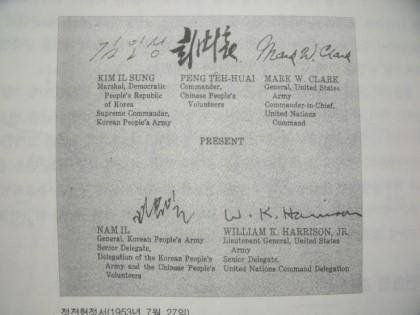
TW: Rape, murder
#OTD in 1992, US Private Kenneth Markle III raped and murdered 26 year old sex worker Yun Geum-I in the city of Dongducheon, just outside Camp Casey.
Geum-I’s case was the first time a US soldier was tried in a ROK court for crimes against a Korean sex worker.
#OTD in 1992, US Private Kenneth Markle III raped and murdered 26 year old sex worker Yun Geum-I in the city of Dongducheon, just outside Camp Casey.
Geum-I’s case was the first time a US soldier was tried in a ROK court for crimes against a Korean sex worker.

Under the Status of Forces Agreement (SOFA), US soldiers are broadly protected from prosecution under ROK law
Yun Geum-I was not the first camptown sex worker to be killed by a US soldier, but the outrage surrounding her murder forced the US to let Markle be tried in a ROK court
Yun Geum-I was not the first camptown sex worker to be killed by a US soldier, but the outrage surrounding her murder forced the US to let Markle be tried in a ROK court

In 1993, the US paid $72,000 to the family of Yun Geum-I. Markle was initially given a life sentence, but this was reduced to 15 years because of the settlement payment with the victim’s family.
Markle was released in 2006 after serving 13.5 years. hani.co.kr/arti/english_e…
Markle was released in 2006 after serving 13.5 years. hani.co.kr/arti/english_e…
In “Haunting the Korean Diaspora,” Grace M. Cho notes that Yun’s murder “marked a turning point at which the yanggongju (‘Western princess’) as a symbol of a colonized nation was transformed from the shameful sex worker in exile to the nation’s daughter welcomed home.”
Images of Yun Geum-I’s murdered body were widely proliferated—making her into a symbol for all Korean suffering under US occupation. This hypervisibility has been the subject of feminist critique.
From “Haunting the Diaspora”:
From “Haunting the Diaspora”:

“Camptowns” have existed in the vicinity of US military bases in Korea since the start of US occupation, and the US and ROK militaries have a long history of collaboration in violence against sex workers — including torture and medical experimentation. newrepublic.com/article/155707…
Derogatorily referred to as “yanggongju” (Western princess), camptown sex workers were and remain marginalized from Korean society. Today, an increasing number of camptown sex workers in Korea are migrants from Southeast Asia. 

Gendered and sexual violence is intrinsic to US occupation and war. Sex workers, women, and queer and trans people are particularly vulnerable to this form of military violence, especially in the Asia-Pacific—the region with the most US military soldiers on earth outside the US. 

In 2014, Jennifer Laude, a Filipina trans woman, was murdered by US Lance Corporal Joseph Scott Pemberton.
Pemberton was tried and convicted in a Filippine court in 2015. He was pardoned and released this year by President Rodrigo Duterte.
Pemberton was tried and convicted in a Filippine court in 2015. He was pardoned and released this year by President Rodrigo Duterte.

Dr. Hyun Sook Kim notes, “the murder of Yun . . . indicates the urgent need for the divided Koreas to be unified, the peninsula to be de-militarized, and the American troops to be withdrawn as soon as possible.”
Adding on: the murder of Yun signals the urgency of decolonization.
Adding on: the murder of Yun signals the urgency of decolonization.
We extend this analysis to every site of US military occupation—from the Philippines to lands w/in “US borders.”
Sexual violence has been intrinsic to US warfare since its use against Indigenous & enslaved Black people. The solution is anti-imperialism & international solidarity
Sexual violence has been intrinsic to US warfare since its use against Indigenous & enslaved Black people. The solution is anti-imperialism & international solidarity
• • •
Missing some Tweet in this thread? You can try to
force a refresh











